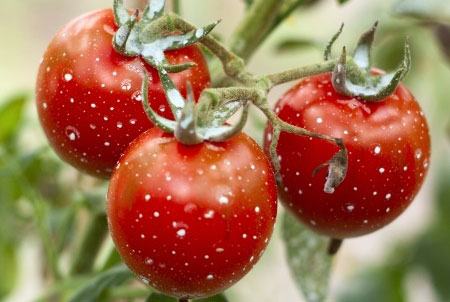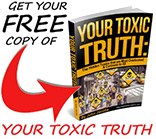Discover the new pesticide that’s now being used and applied to the seed to make the whole plant toxic. Check out the article we found over at Huffpost Living.
You grab an apple out of the fridge and carefully wash it before cutting it up for your kids. Or you decide not to buy the more expensive organic bananas and avocados in the supermarket because you think, “Hey, I’m not going to eat the skin.” If this sounds familiar, you may need to re-think your pesticide avoidance strategy, because the fastest growing class of agricultural chemicals aren’t on your food, they’re in your food.
When my wife and I started farming ten years ago, we subscribed to agricultural magazines that were filled with ads for pesticides. We tended to ignore them — as organic producers, we weren’t in the market for chemicals — but I started to notice that many of the ads had the word “systemic” in the headline. I had never heard of a systemic pesticide, so I did some research, and what I discovered shocked me. What the big chemical companies were selling were pesticides that made the whole plant toxic to pests, including the part we eat. That seemed like a very bad idea to me, but our current agricultural system seems to double down on bad ideas, and the use of systemic pesticides has exploded.
Pesticide use really got going after World War II — some of the first insecticides were nerve gas agents invented by the Nazis, and 2,4-D, a common herbicide still used widely today, was invented by the US military during the war, and was later one of the main components of Agent Orange. These chemicals were highly effective, but they were also highly toxic to humans, and they usually had to be sprayed directly onto the plant or insect the farmer wanted to kill, which meant farmers often had to spray repeatedly to kill subsequent outbreaks of bugs and weeds. Chemical companies spent a lot of time and money trying to increase what they call “persistence,” looking for compounds that would stay deadly for days or even weeks after spraying. Their success saved farmers money, but it also made it more likely that pesticides would persist on fruits and vegetables all the way to your kitchen table. And farmers often still had to spray multiple times in a season.
In the 1990s, a whole new class of pesticides, called systemics, was introduced. The first on the market were neonicotinoids — they made the news after research suggested they were at least partially responsible for the dramatic die-off of bees and other pollinators in Europe and North America in recent years. Neonics, as they’re commonly called, illustrate the frightening power and persistence of systemic pesticides. Applied only once, as a powder to seeds before planting, they make every part of the plant toxic to insects for the entire life of the plant.
And what about us? If you’re not buying organic, virtually everything you eat contains systemic pesticides — fruit, vegetables, grains, even meat. There is no conclusive evidence that systemics are harmful to humans, but we’ve been consuming a cocktail of different systemic chemicals for decades now, and there’s been virtually no study of what that might mean for our long-term health, or the potential impacts on developing children. You’ll pardon me if I choose not to be part of that experiment.
Next Article: Tips On How To Eat Organic Even On A Small Budget
Read full article: Systemic Pesticides Aren’t On Your Food — They’re In It







Denise Lazur
Nov 27. 2015
Chemtrails spraying toxic chemicals everyday, all day, ensure nothing is organic anymore.